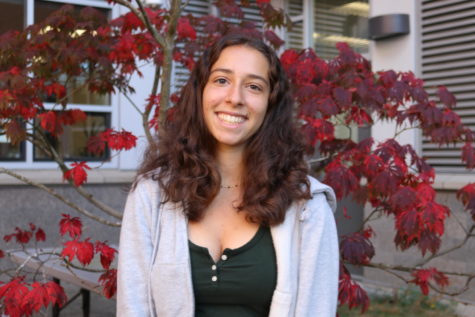Trust the process: Q&A with D1 athletes
Trust the process: Q&A with D1 athletes
June 12, 2023
For those high schoolers looking to continue their athletic careers in college, it is easy to get overwhelmed by the vast and stressful world of college recruiting. However, two Shorewood seniors, Grace Lindberg and Logan Anderson, have successfully navigated this process themselves and seek to provide advice to other student athletes looking to do the same. Both accepting offers from D1 colleges, Lindberg plans to continue swimming for Arizona State University and Anderson will play baseball for University of Washington, Seattle this fall.
How did you first get involved in your sport? What experience do you have?
Lindberg: “I first started swimming during the summers at Klahaya when I was in kindergarten, nothing too serious. Then I joined a club team at age 7 or 8, swimming around 3-4 times a week, and it just kind of naturally progressed from there.” Anderson: “I’ve played little league baseball since I was 5, but I didn’t get serious about it, pitching in particular, until my sophomore year. Freshman year I tried out for Shorewood’s team and made varsity, but then the season got canceled. So sophomore year I joined my first summer team, the Shoreline Royals.”
Describe the recruiting process. What should prospective athletes know about it?
Lindberg: “To be honest, the recruiting process itself was hell.” Anderson: “Mine was different… I wasn’t really getting looked at at all my sophomore year, but my coaches kept telling me I should’ve been. Then junior year, I got looked at by the junior colleges (juco teams) in Washington and was offered by almost all, and my main challenge was choosing which one to commit to. It was all working towards the ultimate goal though, which was to get a D1 offer.”
Lindberg: I can elaborate… I’ve known I wanted to swim D1 since freshman year, I mean, swimming has always been my primary sport. June 15 going into my junior year was the day that communication began to be allowed for colleges hoping to recruit, and I remember just being overwhelmed by emails from coaches, and even a few texts and phone calls. I spent some time just seeing which colleges I was interested in, and which I wasn’t.
How did you end up committing to your D1 college?
Lindberg: “I actually didn’t even start talking to ASU until December of my junior year, I was mostly looking at schools in the South, where really good swimming is right now. But my former club coach was like ‘Grace, I really think you should do a call with ASU, just do one call, please, please,’ because their coach is a great guy, he was Michael Phelps’ coach. So I took a call with ASU and I loved them, so much. People say you have like a feeling about a school when you go visit and I was kind of worried because I didn’t think that was gonna happen. But I mean, it was pretty immediate once I visited… it wasn’t always a dream school but it is now.” Anderson: “So I actually committed to a JuCo team first, which helps out a lot, because it reassures D1 schools that you’ve received offers from other schools. My main goal was always to play for UW, and my coaches helped out a lot. Getting accepted to UW academically was also major, and then after that, I was offered to play at UW and committed.”
Is there any advice you have for prospective D1 student athletes?
Lindberg: “Email coaches and be persistent. And explore all your options.” Anderson: “Don’t waste money on showcase events and club teams until you have the skills that college coaches are looking for. Spend your money on good strength and skill coaches instead. Also, make a Twitter account devoted to your sport and follow the coaches from the schools you want to go to. Post clear videos with measurable stats and tag a few coaches.”
Is there anyone you would like to thank?
Lindberg: “I’d like to thank the Cascade Swim Club and all my swim coaches.”


